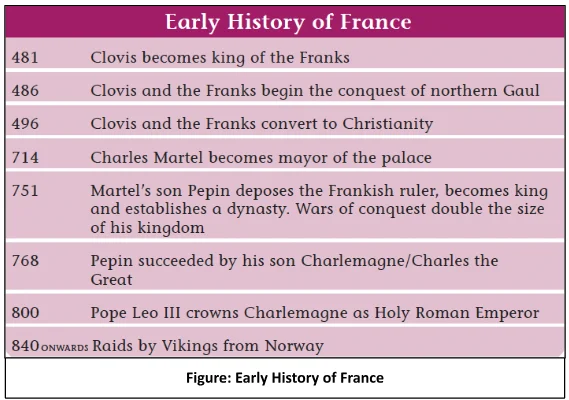![]() 5 Jul 2024
5 Jul 2024
Introduction
In the socio-economic and political landscape of Western Europe from the 9th to the 16th centuries, significant transformations shaped the structure of society. One notable concept that emerged during this period was the ‘Three Orders,’ a framework that organized society into distinct classes. This categorization played a pivotal role in defining the roles and relationships of individuals within the medieval European social structure.
Germanic Migrations: Following the collapse of the Roman Empire, various Germanic groups migrated to regions like Italy, Spain, and France.
Bloch’s Study of Feudalism
|
Meaning of Feudalism: Historians use the term ‘feudalism’ to describe the complex economic, legal, political, and social relationships that characterized medieval Europe.
France and England
Gaul’s Evolution into France: Gaul, a Roman province, boasted extensive coastlines, mountains, rivers, forests, and fertile plains. Over time, it evolved into the nation known as France, thanks to the influence of the Franks, a Germanic tribe, who ruled it from the sixth century.

The First Order: The Clergy
The Catholic Church in Medieval Europe: Church possessed its own laws, owned lands granted by rulers, and could impose taxes, making it a powerful institution independent of the king.
Monks
In addition to the Church, devout Christians in medieval Europe had another form of religious organization.
| Benedictine monasteries
In Benedictine monasteries, there was a manuscript with 73 chapters of rules which were followed by monks for many centuries. Here are some of the rules they had to follow:
|
| Must Read | |
| Current Affairs | Editorial Analysis |
| Upsc Notes | Upsc Blogs |
| NCERT Notes | Free Main Answer Writing |
Despite the conversion of Europeans to Christianity, they retained some of their ancient beliefs in magic and folk traditions.
The Three Orders – clergy, nobility, and peasants – defined medieval European society. The Church, with its clergy and monastic institutions, wielded immense power. Feudalism, an intricate system of land ownership and obligations, shaped social and economic life. Though Christianity dominated, remnants of older beliefs persisted.
| Related Articles | |
| MEDIEVAL HISTORY | List of Joint Military Exercises of India |
| Europe’s AI Convention | Analyze the socio-economic factors |
<div class="new-fform">
</div>